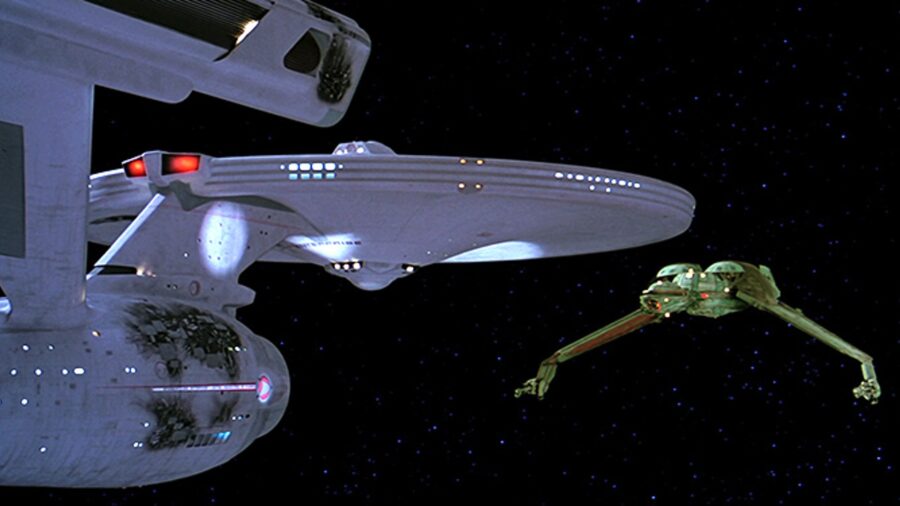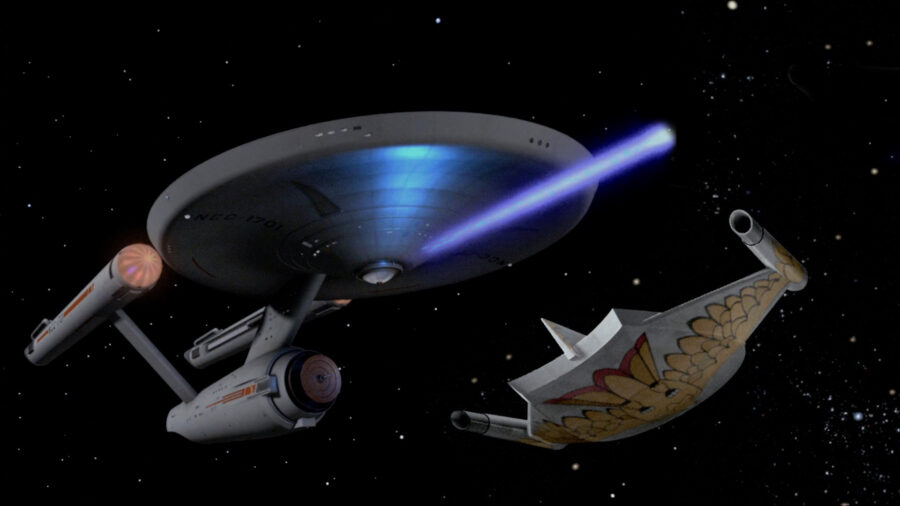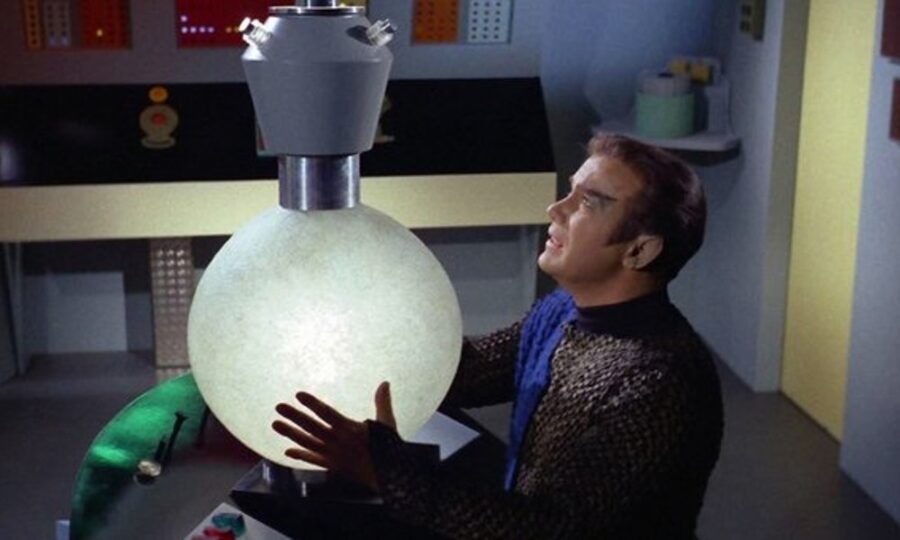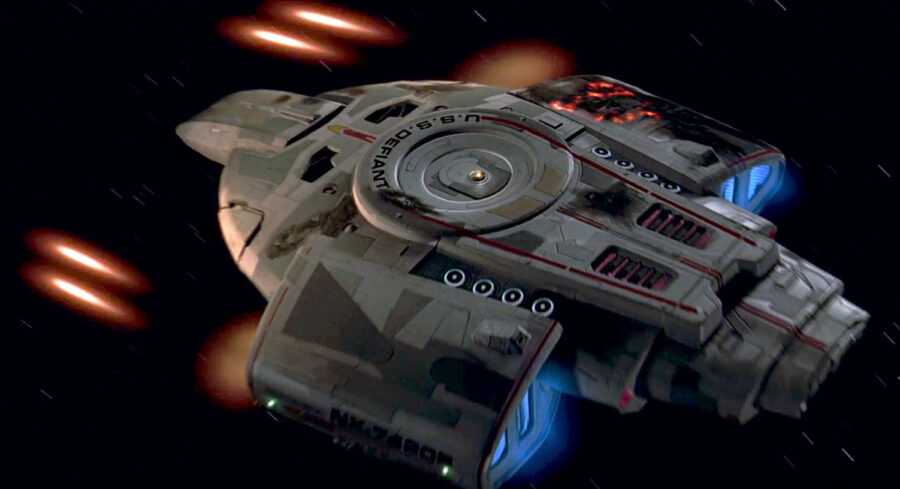The Cloaking Devices Of Star Trek Explained

In Star Trek, cloaking devices allow ships and other objects to become undetectable—both visually and to sensors. But how does this technology work and how has it been thwarted? We’re breaking it all down for you here.
Starting from a real-world perspective, Star Trek’s cloaking devices were first developed (though not yet named as such) by screenwriter Paul Schneider for the Original Series “Balance of Terror,” which was conceived as a space-faring version of submarine movies like Run Silent, Run Deep and The Enemy Below.
The idea was to give starships a similar feature to submarines submerging to stay out of enemy radar. The essential idea—”selective bending of light”—held and was later referred to with the term “cloaking device” by D.C. Fontana in her script for “The Enterprise Incident.”
Cloaking devices in Star Trek function by bending light at the expense of massive amounts of energy.
In terms of how Star Trek’s cloaking device might actually work, the essential principle of bending light describes the visual aspect quite well. Essentially, instead of reflecting and absorbing light, cloaked ships bend light so that it appears to pass through them. Warp drives already bend space itself and while the same technology is not used in cloaking, its existence does provide some basis to the idea that such bending could be possible.

As the Star Trek episode “Balance of Terror” first established, however, cloaking devices require an enormous amount of energy, which results in a loss of certain functions like weapons, shields, and transporters. This would likely be the case in any real-world cloaking scenario.
Current attempts to create this technology have resulted in the ability to bend light in at least one wavelength in the electromagnetic (EM) spectrum around an object. However, the capacity to do more would require significant energy consumption.
The first cloaking device in Star Trek appeared in The Original Series episode, “Balance of Terror.”
But Star Trek’s ships don’t just use visible light to be able to see in space. Their sensors can detect a variety of wavelengths and particles, meaning cloaking devices have to evade much more than sight. They, therefore, have to bend both light and other EM radiation to throw sensors off.

Star Trek’s cloaking devices are usually incorporated into the shield systems of a vessel. This allows the device to throw up a cloaking field (sometimes called “cloaking shields”) around the vessel that will bend light and EM radiation around the ship. The result is a stealth mode that can allow a ship to follow, sneak up on, or surprise attack another vessel.
There are, however, ways Star Trek’s various crews have found to get around cloaking devices, which are most often employed by Romulans, Klingons, and Suliban. Captain Archer’s timeline provided his crew with 31st-century quantum beacons that allowed detection through cloaks on Suliban ships, and Romulan cloaks on mines.
Later, the USS Discovery encountered a Klingon vessel called the Sarcophagus that used a large gravitational field as a cloak, imperfections in which provided barely perceptible shifts in background EM radiation that allowed for detection of the vessel.
Detecting cloaked ships in Star Trek is possible, from detecting tachyon particles to monitoring EM radiation.
Later in the Star Trek timeline, the Enterprise detected cloaked vessels via sensor blips that gave the rough location of a cloaked ship, energy distortions, and later the plasma exhaust of a cloaked Klingon Bird of Prey (Star Trek VI). That Bird of Prey employed an advancement in cloaking technology that allowed the vessel to fire its weapons while cloaked. Ultimately, a plasma-exhaust-seeking photon torpedo was able to bring it down.

In Star Trek: Deep Space Nine, a cloaked ship was detected via a buildup of tachyon particles, while other distortions associated with warp drive have been used, such as tiny subspace variances that are present when a cloaked ship goes to warp.
That series also introduced the USS Defiant, the first Starfleet vessel to regularly utilize cloaking technology. While interphase cloaking was developed that would allow a vessel to pass through solid matter, the technology was deemed far too dangerous by both the Federation (which had developed it illegally) and the Klingons.
Overall, Star Trek’s cloaking technology bears a strong resemblance to the technology currently being developed now and could conceivably exist in the future. Currently, though, cloaking technology is proving to be as elusive as a Romulan Warbird.












